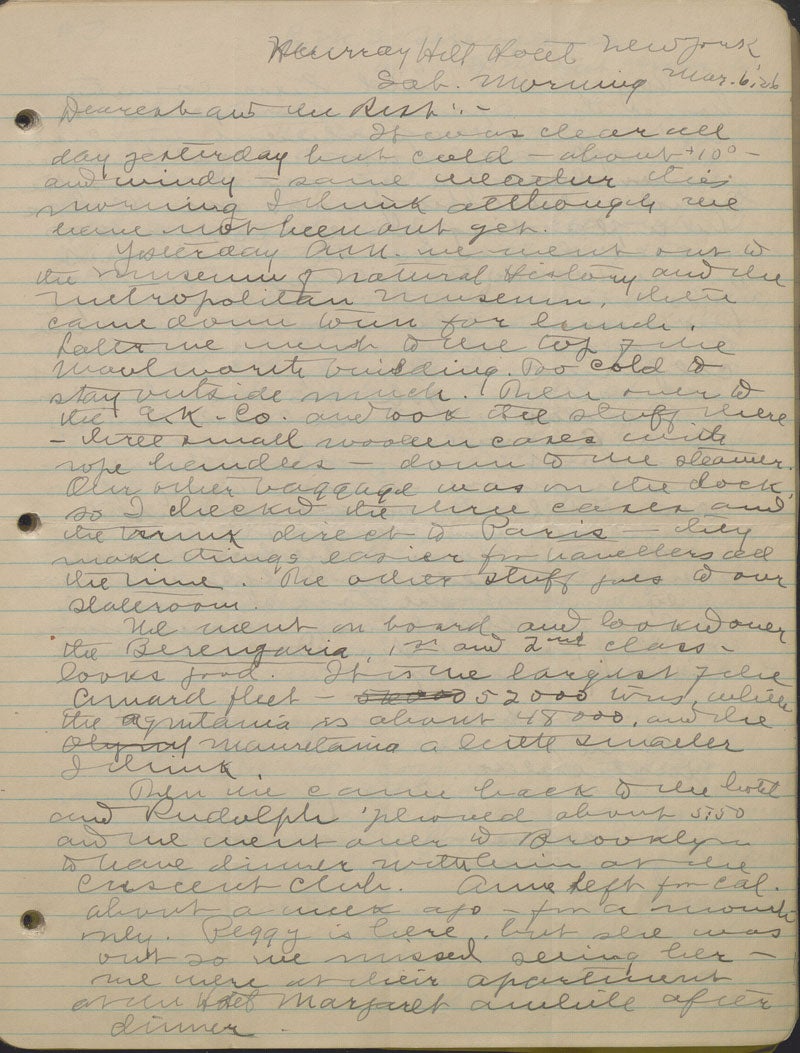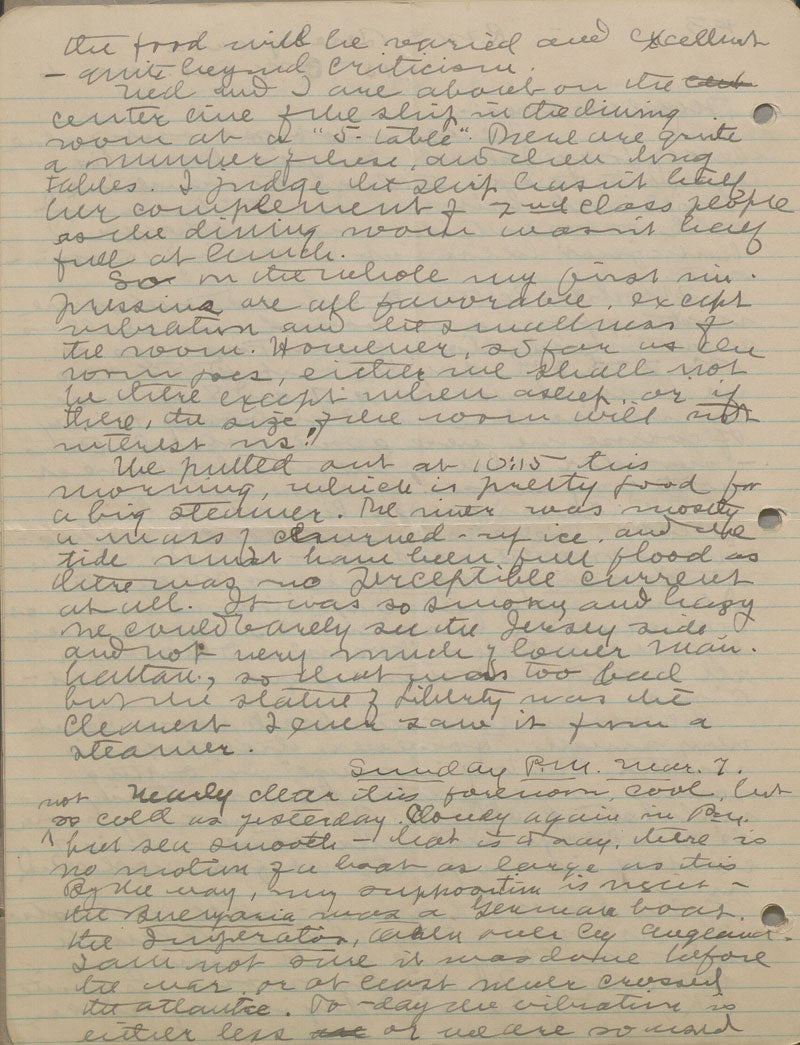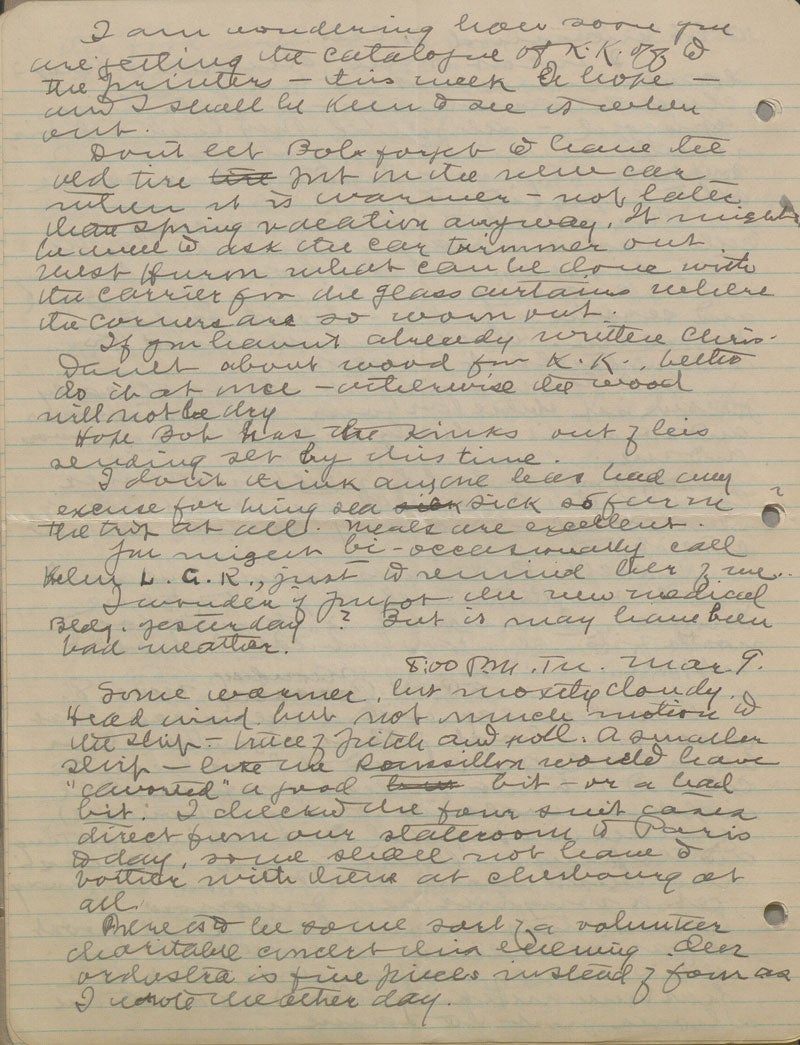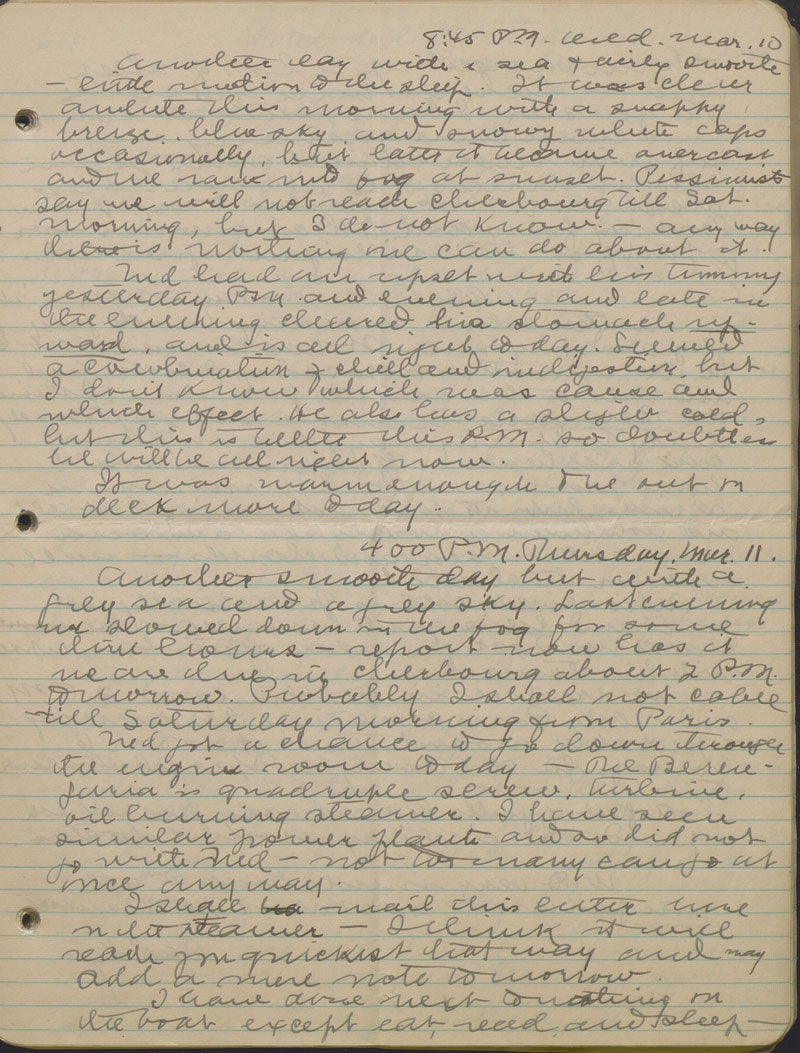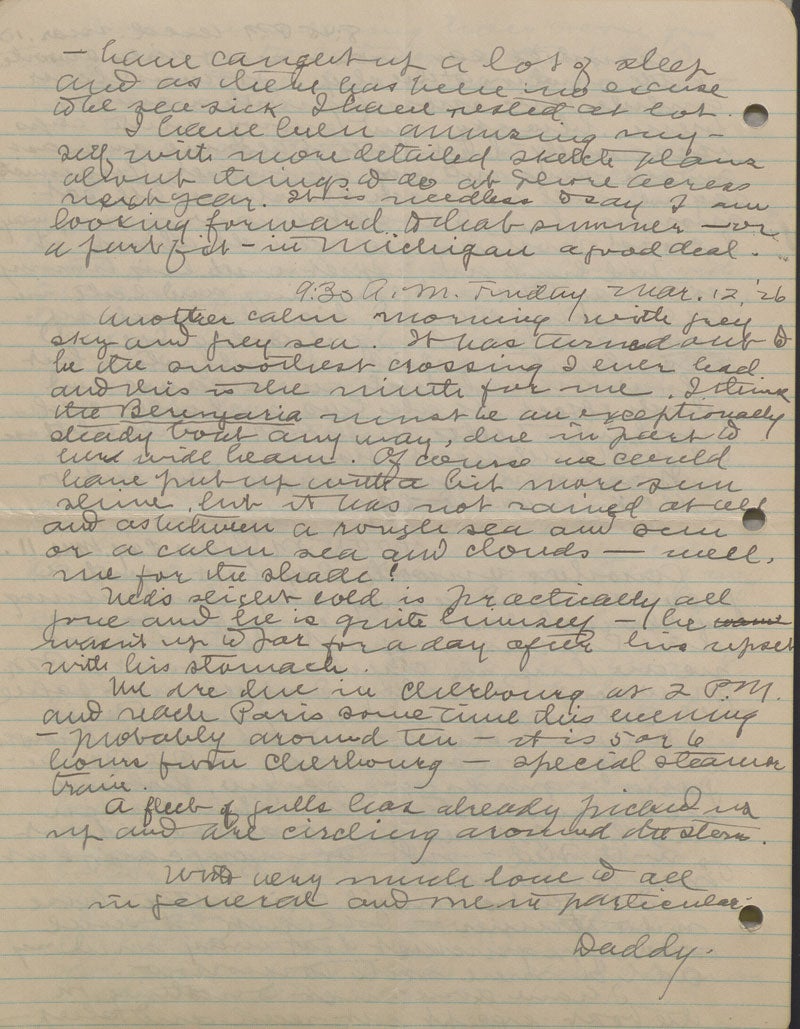By Sebastián Encina, Collections Manager
There are many skills that come in handy when one decides to be an archivist. An understanding of subject matter is beneficial, as it allows the archivist to understand the collection they care for, how to best organize it, and how researchers will access and use the information. Having a good memory is also a benefit to the archivist, as questions often come years apart. On top of all this, an archivist should be well organized.
One aspect of being a good archivist is often not taught or discussed: the ability to decipher handwriting. Archives are composed of a wide variety of materials: typed letters, drawn maps, photographs, and, of course, handwritten letters. They are written in a number of languages, using regional vocabularies, and often not written very neatly. Archivists spend a good amount of time trying to understand what word someone was using or distinguishing a cursive ‘l’ from a cursive ‘e’ and still not fully understand what the person has written.
For this month’s “From the Archives,” we present a selection of letters written by George Robert Swain in 1926 as he traveled to Europe and Egypt. Swain is writing to his family, affectionately referred to as “My Dear People.” On the first page, Swain speaks about heading out, traveling with U-M President C.C. Little, and securing visas to enter France, Italy, and Egypt (at $10 per). In these letters, Swain also speaks of Ned, Swain’s son Edwin L. Swain, who accompanied the elder Swain on these travels. On the first day in New York City, George and Ned meandered through the aquarium and took in the feature film Ben Hur after dinner (“I am inclined to think is the most amazing film I ever saw” [sic]). On the second day, they visited the Museum of Natural History. Through his letters, which almost act as a journal, Swain recounts nearly every aspect of their trip. At the close of letter 2, Swain adds the postscript, “I suppose my next letter will be from France,” indicating that they are off to Europe. Swain signs each letter as “Daddy.”
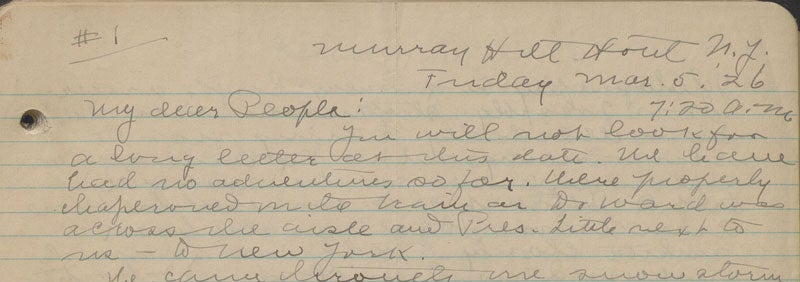
The letters begin Friday, March 5, 1926, and continue through Sunday, August 15, 1926. There are close to 200 pages of letters with information bursting out the seams. It takes a while to become accustomed to a particular person’s handwriting, but it doesn’t make it easier to read. However, once the words become legible, we see the affection Swain had for his family, and we learn about the adventures he and Ned were able to enjoy. We see how Swain’s travels correspond with the excavations, where they were each day, and what was happening on those days. We learn not only aspects of the archaeological trip, but also about life in the 1920s. What was happening in the world that was affecting them and those they were surrounded by?
There is so much to learn from the materials found within an archive if only we are able to read them. Over time, archivists become familiar with the people they read about, the vocabulary they use, and their penmanship. It can take a long time to eventually breeze through a letter as if it was one’s own handwriting, but once we can, it opens up a whole new world for us to encounter.




